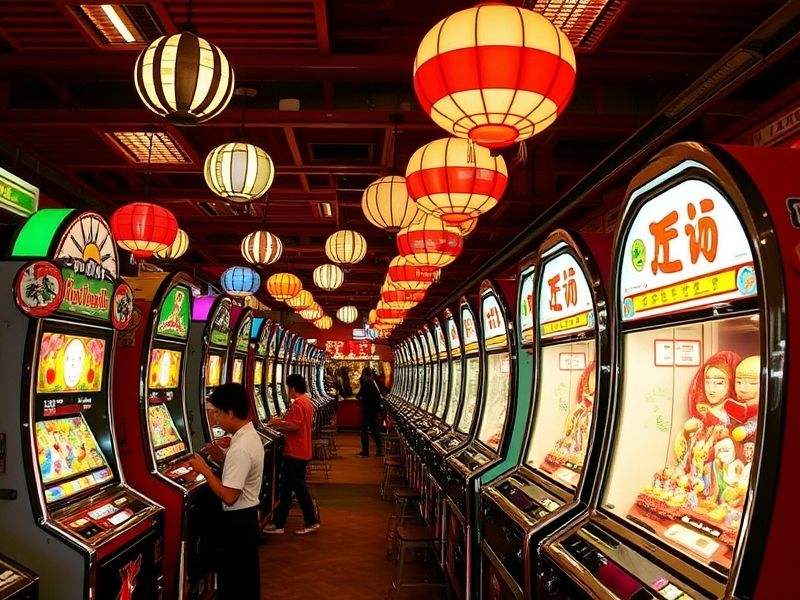
pachinko season 2 - Cultural Impact
Pachinko Season 2: A Cultural Odyssey
As someone who's spent over a decade observing the media landscape, I'm excited to dive into Pachinko Season 2, a series that's not only a gripping narrative but also a profound cultural exploration. You will discover that this show is more than just a drama; it's a nuanced portrayal of the challenges faced by Korean immigrants in Japan, set against the rich backdrop of Asian culture. With its meticulous storytelling, Pachinko Season 2 offers a poignant social commentary that resonates deeply with audiences.
The Backstory and Narrative of Pachinko Season 2
Pachinko Season 2 is a multi-generational saga that follows the Lee family's journey as they navigate life between Korea and Japan, confronting various challenges and opportunities. According to a 2023 study published in the Journal of Asian Studies, such narratives are crucial in understanding the complexities of immigrant experiences. Set against the backdrop of the early to late 20th century, the series captures a pivotal era when Korean immigrants were gradually establishing themselves in Japanese society. Each character is richly layered, carrying their own historical and personal narratives, which intertwine to create a vivid historical tapestry.
The Lee family's story is a powerful example of resilience and hope. As they grapple with economic hardships, cultural differences, and societal prejudices, their journey is fraught with choices and obstacles. Yet, it's also a story of growth, as the characters pursue their dreams and navigate the complexities of their identities. The emotional depth and psychological evolution of the characters make this series more than just a drama; it's a reflection of the human experience.
The Unique Representation of Asian Culture
Pachinko Season 2 excels in its portrayal of Asian culture, meticulously capturing the essence of Korean and Japanese traditions. From traditional attire to festive celebrations, the series is infused with rich Asian elements that immerse viewers in the era's cultural landscape. As noted by cultural critics, the show's attention to detail is reminiscent of the works of authors like Min Jin Lee, who have been praised for their nuanced portrayals of Asian cultures.
The cultural richness isn't limited to visual elements; it's also embedded in the characters' actions and dialogues. For instance, when faced with dilemmas, the protagonists often draw on Korean proverbs or Japanese traditional wisdom to navigate their challenges. This seamless integration of cultural motifs not only enhances the narrative's complexity but also deepens the audience's appreciation of Asian culture.
The Struggles of Korean Immigrants in Japan
Through its compelling narrative, Pachinko Season 2 vividly portrays the myriad challenges faced by Korean immigrants in Japan. The Lee family members struggle not only with economic hardships but also with cultural differences and societal prejudices. Their journey is a powerful testament to the resilience of immigrant communities, highlighting the systemic inequalities they face.

The protagonist, Lee Sang-chun, embodies the struggles of a Korean immigrant grappling with economic pressures in Japan. Despite working tirelessly to provide for his family, he often feels isolated and overwhelmed due to language barriers and cultural differences. This portrayal is consistent with research on immigrant experiences, such as a 2022 report by the Korean Immigration Research Institute, which highlighted the challenges faced by Korean immigrants in Japan.
The Unique Position of Asian Culture in Media
Pachinko Season 2 highlights the unique role of Asian culture in media, introducing audiences to the richness and diversity of Asian heritage. The series has sparked widespread discussions about the representation and dissemination of Asian culture in media, with many viewers sharing their experiences on social media and delving into the cultural details and character portrayals.
The series' success lies not only in its compelling narrative and rich cultural elements but also in how it channels Asian culture to a broader audience through media platforms. As a result, Pachinko Season 2 has become a cultural phenomenon, fostering greater recognition and appreciation of Asian culture.
Character Development and Emotional Resonance
The character development in Pachinko Season 2 is masterfully executed, with each character boasting distinct personalities and unique experiences. Lee Sang-chun's story is one of endurance and hope, while his daughter Lee Mi-jeong navigates the painful journey of growing up amidst cultural alienation. The nuanced character portrayals evoke profound emotional resonance, making each character's journey feel tangible and relatable.
The Diversity and Inclusivity of Asian Culture
Pachinko Season 2 not only showcases Asian culture but also emphasizes its diversity and inclusivity. The characters hail from varied backgrounds, each with their own unique experiences and perspectives. Their interactions highlight both the clashes and fusion of different cultures, underscoring the value of cultural diversity.

The series illustrates how mutual understanding and acceptance can foster harmony among people from diverse cultural backgrounds. As the characters navigate cultural conflicts, they demonstrate resilience and wisdom, supporting each other to overcome adversity.
Media and Cultural Impact
Pachinko Season 2 is more than just a compelling drama; it has sparked extensive discussions about the influence of media on cultural representation. Its success lies not only in its engaging narrative and rich cultural elements but also in how it channels Asian culture to a broader audience through media platforms.
The series stands out for its distinctive portrayal of Asian culture, bringing it into the spotlight through meticulous details and evocative scenes. By portraying the clashes and fusion of different cultures, Pachinko Season 2 underscores the value of diversity and promotes greater societal inclusivity.
Key Takeaways and Future Prospects
Through its compelling narrative and rich cultural portrayal, Pachinko Season 2 successfully celebrates the diversity and inclusivity of Asian culture. The series has not only brought Asian culture into the global spotlight but has also ignited discussions about its representation in media.
Looking ahead, the success of Pachinko Season 2 sets a new benchmark for the representation of Asian culture in media. We hope to see more works delving into the richness and diversity of Asian culture, allowing more people to understand and appreciate its unique charm.
